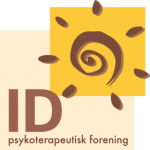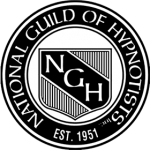Psychotherapy – Talk Therapy
What is Psychotherapy?
Psychotherapy, also known as talk therapy, is a collaborative process between the client and the therapist. The focus of the therapy is on the client and the issues that are uncovered and addressed during the sessions. Psychotherapy, a scientifically-based psychological treatment method, typically starts with talk therapy. The duration of therapy can vary.
A certain level of openness or readiness to explore oneself, even if it can be challenging and painful, provides a solid foundation for successful therapy.
Psychotherapy can help you become more aware of yourself, your patterns of reaction, and the ways you interact with others. This increased awareness can lead to more intentional and appropriate actions in your life.
In this way, psychotherapy can lead to greater satisfaction with yourself and your overall life.
The clarity and insight gained through therapy are lifelong benefits.
I have therapeutic experience in the following areas:
- Stress
- Anxiety
- Low self-esteem
- Grief
- Depression
- Dependence
- Adults and children from homes with alcohol-related issues
- Parents and relatives of individuals with disabilities
- and many moore
I am a trained and certified ID Psychotherapist from the ID Academy.
ID stands for Integrative – Dynamic.
Learn more about psychotherapy/talk therapy - What does ID stand for
Integrative:
The ID training program integrates various therapeutic approaches, including methods from cognitive, behavioral, systemic, psychodynamic, as well as experiential existential-humanistic psychotherapy.
This provides me as a psychotherapist with a wide range of tools in my work and allows me to meet the diverse needs of clients seeking therapeutic help during personal crises and challenges.
A single psychotherapeutic approach rarely offers the opportunity to address the broad spectrum of problems, themes, and crises encountered in everyday practice.
Therefore, it is important to be able to utilize methods from multiple therapeutic directions when working with the variety of issues clients present.
Dynamic:
The goal is to engage with clients in a flexible, client-oriented form of psychotherapy. The therapeutic starting point is based on the client’s current situation.
The work proceeds on the client’s terms in a dynamic process.
THE REACTIVE LEVEL - THE CREATIVE LEVEL - THE ESSENTIAL LEVEL
Here is some additional reading material, which provides a brief description of the different levels in which one can be anchored: ‘The Reactive Level,’ ‘The Creative Level,’ and ‘The Essential Level.’ The understanding of the following content should be viewed through the lens of these level descriptions.
It is important to keep in mind that the following is a theoretical framework intended as a brief introduction to the theory behind psychotherapy/talk therapy. The understanding and insight into each individual often go beyond these theories, as the diversity we represent as human beings is far more nuanced than what can be mapped and described in written words. We are not confined to just one level but instead oscillate between the three. The levels should not be seen as hierarchical; no level is better than the other. They are simply different ways of understanding and perceiving oneself in the moment.
THE REACTIVE LEVEL
At this level, self-understanding is tied to the identification with specific self-images. We perceive ourselves as being masculine, feminine, self-sacrificing, right, wrong, etc. In some contexts, this self-understanding becomes a stereotypical perception of oneself, and reaction and thought patterns are based on unconscious choices and responses to situations and other people.
The reactive self seeks safety and familiarity, functioning as a psychological defense mechanism.
THE CREATIVE LEVEL
From this level, we are aware of the choices we make and do not remain stuck in a victim role. We can assert ourselves and stand by our decisions, even if they may have negative consequences, because we make choices from a conscious standpoint. The world is seen as subjective, and we recognize it as such, while also being aware that this applies to others as well. We keep our hearts warm and our heads cool.
THE ESSENTIAL LEVEL
This level emerges from the core of our being and encompasses true, authentic love, harmony, clarity, and joy, where the quality of life is independent of external circumstances and people. It represents our deepest identity, soul, or essence.
BEHAVIOR
Our reactive self identifies with behavior. In a certain sense, we are what we do, and our judgment of ourselves and others is based on an assessment of behavior. For instance, the standards we set for ourselves regarding how much and how well we perform our work are crucial for our self-understanding. When our sense of identity is tied to our behavior, we become particularly vulnerable to criticism and blame.
From our creative level of consciousness, we distinguish between identity and behavior and do not hold the belief that we are what we do. This differentiated understanding allows us to better perceive the intention behind, for example, a destructive action. Since our identification does not lie in our behavior, we become less vulnerable to criticism and less critical of the behavior of others.
MENTAL PROCESSES
From our reactive self, we tend to identify with our thoughts, beliefs, and convictions.
We become or identify ourselves with our thoughts, beliefs, and what we hold to be true. We understand ourselves based on what we think about ourselves, such as being the smart one, the dumb one, the hardworking one, the lazy one, the socialist, the liberal, etc. Naturally, with such identification, we become vulnerable to criticism of what we believe and think because the distinction between our person and our beliefs or thoughts is not clear.
From the creative self, we are not identified with our beliefs, thoughts, and convictions. This allows for greater openness to differences and varied perceptions of reality, making space for other people to believe, think, and hold different convictions than we do.
ROLES AND RELATIONSHIPS
From the reactive self, we identify with our roles. We become our roles, making us highly vulnerable when these roles are attacked or criticized. It also becomes challenging when, for some reason, we need to let go of a role. For example, if our entire identity is tied to the role of being a parent, it can be difficult when the children grow up and that role needs to be set aside. The same applies if there is an over-identification with one’s job.
It is natural to take on the roles required by our work, but if a role or relationship becomes our entire identity, and there is over-identification, the vulnerability is naturally high.
The creative self does not make roles our whole identity. We take the necessary responsibility that may lie in a given relationship or role, but at the same time, we are ready to allow others to take or share the required responsibility. It is also important that, from this perspective, we consider the person behind the role and relationship.
EXPERIENCES AND MEMORIES
The creative self views past successes and failures as experiences and focuses on what is important — the here and now. The broken identification with old self-images allows us to see past experiences as valuable feedback.
EXISTENTIAL CONDITIONS
The creative self is less identified with its self-image, making it less crucial to hide the negative sides. From this perspective, we can act as our own parents, no longer needing external validation or recognition. A lack of acceptance or criticism does not necessarily trigger existential feelings of loneliness, isolation, or non-existence.
In other words, we can take care of our own needs, and the energy previously used to suppress our shadow sides is released. This liberated energy boosts our overall energy levels and strengthens our connection to the essential self, thereby increasing our attachment to our core being.
POTENTIALS AND LIFE VALUES
The creative self, on the other hand, does not identify with the limitations inherent in these experiences, potentials, or talents. Instead, it consciously chooses based on a desire for growth or intentional identification.
SPIRITUALITY
The reactive self identifies with spiritual experiences, revelations, and existential insights. If there is any identification with these spiritual experiences, and this identification stems from a desire to be special or to gain recognition, then despite perhaps having a religious revelation, it is still the reactive self at play.
The creative self, however, does not identify with spiritual experiences or the need to be special. Instead, it views spiritual experiences and insights as enrichments and understandings, seeing them in a realistic light.
Principles of Change
Awareness.
Awareness of possibilities and obstacles for further development is a prerequisite for change. Without awareness, change is not possible, and it is important to receive help and support in becoming aware of the limitations, barriers, and themes that hinder the unfolding of resources and potentials.
Pattern Disruption.
Pattern disruption refers to breaking old patterns, thoughts, and habits of a self-limiting nature, which in one way or another prevent us from escaping a problem or situation we wish to leave or change.
Re-orientation.
When a pattern is broken, a gap or perhaps chaos arises. How do we find new paths to take, and how and who am I when old patterns no longer dominate? It is important to relate to this new reality and to find a new course and new possibilities for re-orienting oneself.
Motivation.
It is essential to potentially receive help in stimulating and supporting motivation amidst the confusion or chaos that can arise from life changes, in order to take the necessary steps toward new expressions and dreams.
Competence Development.
Competence development is required when a new future is created. One of the most important competencies is the ability to embrace one’s own emotions. If there are emotions we are afraid to confront, feel, or try to escape from, we will achieve a very high degree of freedom and readiness to take risks.
Energy Balancing.
This largely involves creating space in consciousness by learning to relax both physically and mentally. The more relaxed we are, the more the degree of presence and attention increases.
Integration.
To integrate is to gather. The reactive self is characterized by splitting us into parts that we like or want to be, and parts we don’t like or identify with, as well as parts we repress and project onto others. To integrate means to bring ourselves together again and become more whole.






